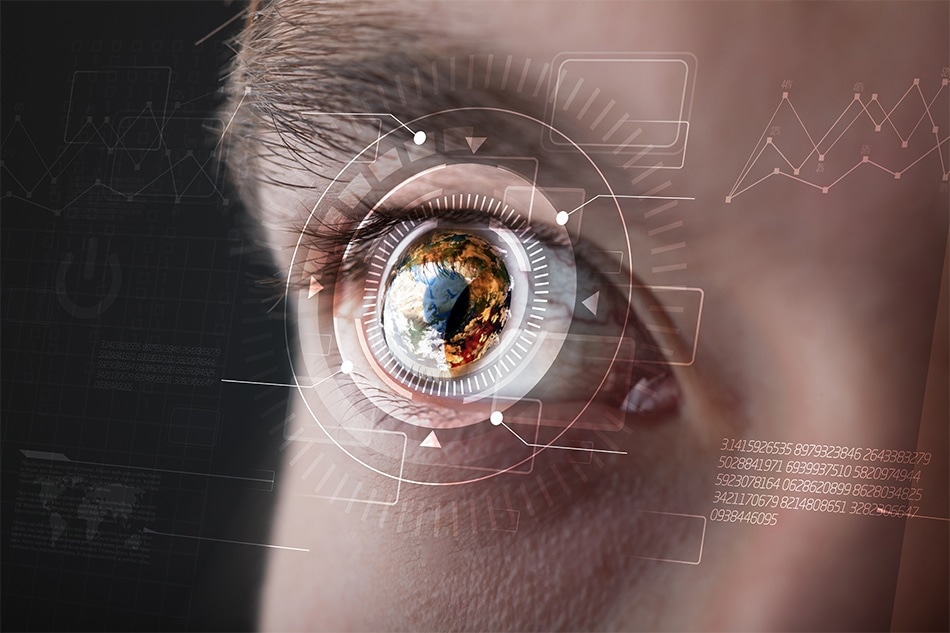
Image Credit: Shutterstock.com/ra2studio
The daily monitoring of a patient’s blood glucose levels is especially important for patients with diabetes mellitus1. Blood glucometers (BGMs) and continuous glucose monitors (CGMs) are the most commonly used devices for this purpose.
BGMs require a tiny drop of blood to be placed on a disposable test strip that interfaces with a digital meter and displays the blood glucose on a digital monitor within a few seconds. CGMs help in the continuous monitoring of glucose levels by use of a disposable glucose sensor that is placed just under the skin to communicates with a radio receiver via a non-implanted transmitter.
Both options are invasive and painful, and can also increase the risk of skin irritations and infections in diabetic patients2. Therefore, non-invasive technologies that do not require frequent blood withdrawal or bioimplants to monitor glucose levels are gaining increasing popularity, however, most of these alternative options are still in the developmental stages.
A research team led by Gregory Herman from the Oregon State University’s School of Chemical, Biological and Environmental Engineering, in collaboration with the Civil Aviation University of China’s College of Science, has recently developed a biosensing contact lens that can detect blood glucose levels3,4.
In their attempts to develop non-invasive methods for glucose monitoring, the integration of glucose sensors into contact lenses was made possible by using recent technology advancements. Contact lenses integrated with glucose sensors that have been previously developed involve enzyme-based electrochemical sensing, however, these devices require multiple non-transparent electrodes to be integrated into the lens5,6.
Indium gallium zinc oxide (IGZO) field effect transistors (FETs) are transistors which could be made transparent that are based on a semiconducting material consisting of indium (In), gallium (Ga), zinc (Zn) and oxygen (O). IGZO transistors are used in a wide range of display applications such as high resolution displays of smartphones and tablets3.
Herman’s team has fabricated a transparent biosensor that could be embedded into a disposable contact lens to monitor blood glucose using FETs with nanostructured IGZ networks as a sensing transducer. The IGZO network of the FET was functionalized with aminosilane groups with cross linked glucose oxidase5,6.
When the biosensor detects glucose, the enzyme, glucose oxidase oxidizes the glucose, resulting in a shift in the pH level of the mixture, therefore allowing the IGZO-FETs to measure the changes in the electric current flowing through them. This change in charge affects the number of acceptor-like surface states, which can deplete electron density in the n-type IGZO semiconductor,5,6.
Any increase in glucose concentrations therefore leads to an increase in the acceptor states and a decrease in the drain-source conductance due to a positive shift in the turn-on voltage. The nanostructures in the IGZO biosensors are capable of sensing minute glucose concentrations in the tears3,5,6.
The FET developed by Herman’s team is comprised of an 8 μm wide nanostructured close-packed hexagonal IGZO network that was formed using colloidal lithography and electrodynamic printing. The FET demonstrated a drain current on-off ratio of 6.1 × 103 and effective electron mobilities of 3.6 cm2 V−1 s−1 5,6.
Sensors showed a decrease in drain source and an increase in positive VON with a great sensitivity in monitoring an increase in glucose concentrations5,6. The specificity of the catalytic reaction between glucose and glucose oxidase in the sensor allowed for an unaffected performance, even in the presence of interfering compounds such as acetaminophen and ascorbic acid5,6.
Although the prototype sensor developed by Herman’s team only senses glucose, researchers believe that more than 2,500 different biosensors capable of measuring different bodily functions could be incorporated into a 1 millimeter square patch of IGZO contact lenses3.
The size and transparent nature of the sensors, combined with the different chemicals present in tears, such as lactate, dopamine, urea and proteins, could allow for these novel biosensors to be incorporated into contact lenses to monitor a wide variety of diseases such as sepsis, liver disease, glaucoma, renal function and even cancers3.
References:
- "Checking Your Blood Glucose." American Diabetes Association. Web. https://diabetes.org/.
- "Tips for Managing Diabetes." Diabetes Research Institute. Web. https://diabetesresearch.org/.
- Dvorsky, George. "Scientists Are Developing a Contact Lens That Tells You When You're Sick." Gizmodo. 04 Apr. 2017. Web. http://gizmodo.com/scientists-are-developing-a-contact-lens-that-tells-you-1793961298.
- "Bio-sensing Contact Lens Could Someday Measure Blood Glucose, Other Bodily Functions." Phys.org. Web. https://phys.org/news/2017-04-bio-sensing-contact-lens-blood-glucose.html.
- "Glucose Sensing Using Functionalized Amorphous In–Ga–Zn–O Field-Effect Transistors." ACS Publications. Web. http://pubs.acs.org/doi/pdf/10.1021/acsami.5b12058.
- Du, Xiaosong, Yajuan Li, and Gregory S. Herman. "A Field Effect Glucose Sensor with a Nanostructured Amorphous In–Ga–Zn–O Network." Nanoscale. The Royal Society of Chemistry, 07 Oct. 2016. Web. https://doi.org/10.1039/C6NR05134K.
Disclaimer: The views expressed here are those of the author expressed in their private capacity and do not necessarily represent the views of AZoM.com Limited T/A AZoNetwork the owner and operator of this website. This disclaimer forms part of the Terms and conditions of use of this website.